Did the English invent bubbly before Dom Perignon?
- Published

Christopher Merrett was the first to document how to put the fizz in sparkling wine
The French monk Dom Perignon is thought to have invented champagne in 1697. But 30 years earlier, an English scientist discovered winemakers on this side of the Channel had long been adding sparkle to their tipple.
Some call it fizz, some just call it bubbly, but its proper name is English sparkling wine.
It is a pleasing if rather pricey beverage, highly regarded by wine connoisseurs and a suitably lively accompaniment to any celebration.
If you think that sounds rather like French champagne, that is because it is made in exactly the same way.
People in France will indeed tell you they invented the stuff - they maintain the 'methode champenoise' was discovered by Dom Pierre Perignon at the abbey of Hautvilliers in 1697.
But in the picturesque Cotswold town of Winchcombe, they know better.
On Monday, a plaque will go up to one of its own, Christopher Merrett - a scientist, physician, naturalist and metallurgist who in 1662 first documented "how to put the fizz into sparkling wine".
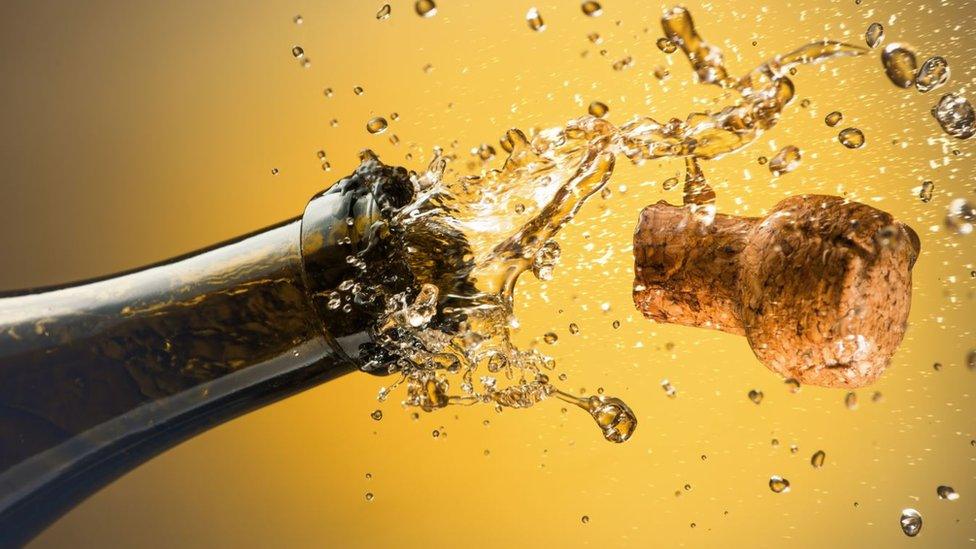
English sparkling offering accounts for more than two-thirds of the country's wine production
In a paper presented to the newly formed Royal Society, Merrett described how English winemakers had been adding sugar to wines to give them a refreshing, bubbly quality - 30 years before a monk in France's Champagne region.
"Our wine coopers of recent times use vast quantities of sugar and molasses to all sorts of wines to make them drink brisk and sparkling and to give them spirit," he wrote.
It was the first time anyone had described the process or used the word "sparkling" to describe the end product, Winchcombe historian Jean Bray said.
What he was actually describing was the result of secondary fermentation.
Is sparkling wine better in England than France?
At the Three Choirs Vineyard near Newent in Gloucestershire, winery manager Keith Shayle explained the process, which starts with fermenting the grape juice in a vat to make a conventional wine.
"To turn a still wine into a sparkling wine we put what we call the base wine into a champagne bottle with some priming sugar and yeast, put a cap on the bottle, and allow it to ferment inside," he said.
"This means the carbon dioxide can't escape, so it's retained in the wine in the bottle and that gives you the bubbles when we take the top off.
"That's the second fermentation, in the bottle itself."
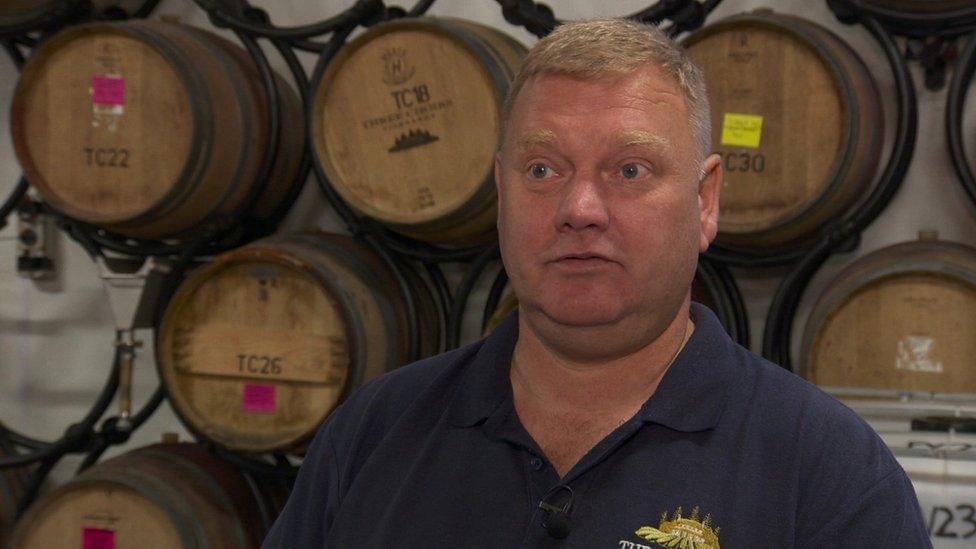
Kevin Shayle of Newent's Three Choirs Vineyard said sparkling wine is fermented inside the bottle
These days it is a hi-tech business.
Fermentation in the bottle produces not only carbon dioxide but also a yeasty sediment which has to be removed - a process known as disgorging.
The bottles are stacked on their sides on a pallet, which over the space of several days is gradually rotated until the bottles are facing downwards.
Sediment collects as a deposit in the neck of the bottle, which is then dipped in a glycol solution to freeze the contents, before the bottle is fed into a disgorging machine which flicks off its temporary metal closure.
Pressure from the gas inside the bottle - roughly three times higher than a car's tyres - shoots the little plug of ice containing the sediment out with a satisfying pop and a brief effervescence.
The machine then adds a small amount of dosage - a sweet, syrupy wine concentrate which improves the final taste - before sealing the bottle once again with a cork in a muselet, or wire cage.
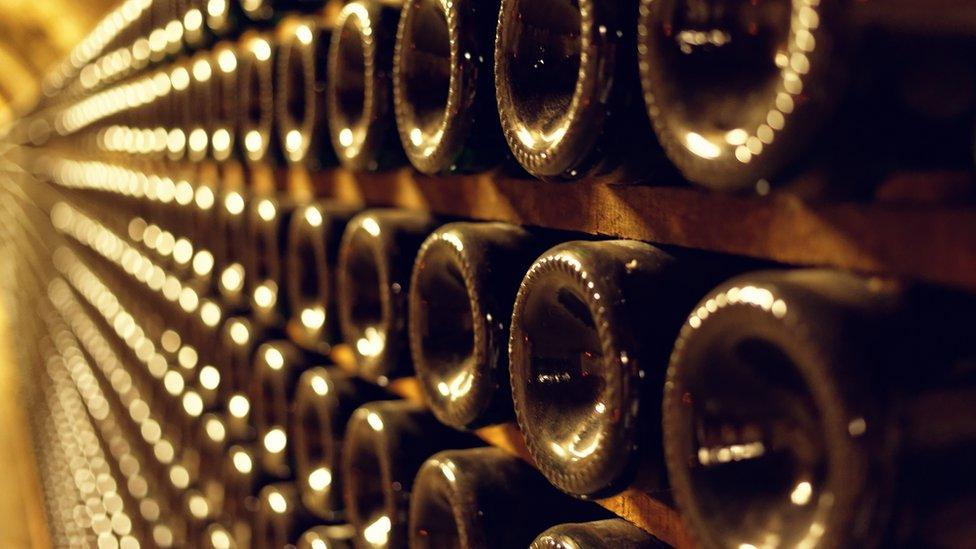
Bottles are stacked on their sides on a pallet which is gradually rotated until the bottles are facing downwards
For French winemakers, secondary fermentation was a menace.
The build-up of gas caused their rather flimsy glass bottles to explode - and when one went bang it could set off its neighbours as well, devastating entire cellars.
But for English winemakers, secondary fermentation and the magic it added was a boon, not a burden. Their wine bottles were heavier and thicker - like modern champagne bottles - so much less likely to explode.
Apparently the Royal Navy is to thank for that. Early modern glassmakers used charcoal made from oaks to heat their furnaces, but the navy banned the use of oak for anything other than shipbuilding.
English glassmakers turned to coal instead, and discovered it burned hotter and allowed them to make stronger glass.
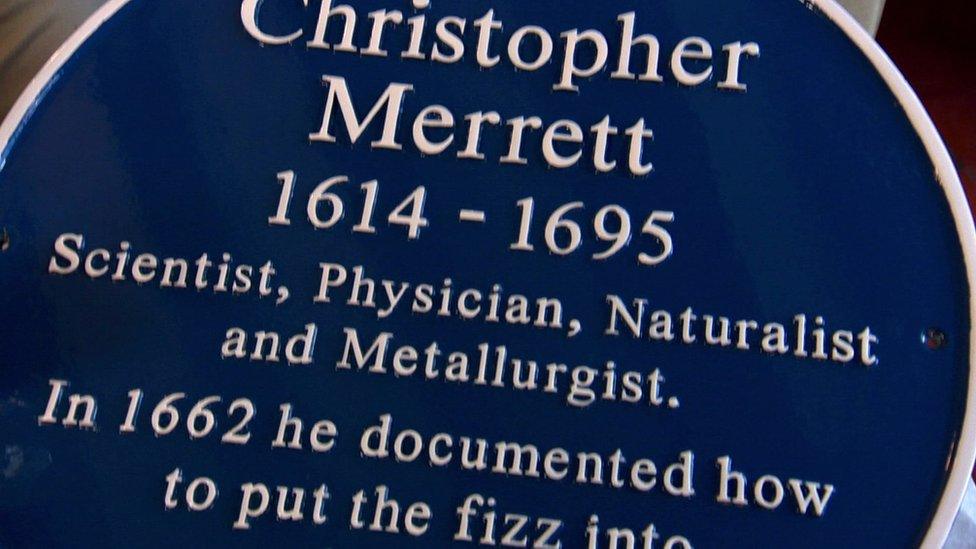
The plaque will go up on Monday on the wall of the house where Christopher Merrett was born
It transpires therefore, that English sparkling wine has a long history - longer even than champagne.
But it also has a long and rather cumbersome name, something winemakers would like to change.
The French have champagne of course, the Italians Prosecco, the Spanish cava and the Germans Sekt. But there is no agreement on an English equivalent.
That's not for want of suggestions.
Nyetimber, which makes its wines in Sussex, has suggested calling it Sussex.
Another Sussex producer, Ridgeview, calls its own sparkling wines, Merrett.
The UK Vineyard Association suggests British Fizz, a name coined by a New York bar - though the group's president, the Duchess of Cornwall, isn't keen.

Tileri Charles-Jones said Swigod didn't have "quite the ring" to it
Poulton Hill, a small vineyard near Cirencester in Gloucestershire, is going to call its own sparkling wine Bulari, derived from the Latin word for bubbles.
That does not sound very English, but neither does Swigod - the Welsh version rejected by the vineyard's manager, Tileri Charles-Jones.
"I don't think that had quite the ring to it that we wanted," said Tileri, who is herself part-Welsh.
What about Brit Fizz? "It sounds a bit alco-poppy," she said, turning up her nose.
Indeed, as Mr Shayle pointed out, English sparkling wine is a premium product and it is important that whatever name it is eventually given does not make it sound like a joke.
So perhaps they should call it Winchcombe in honour of the man who first described it: an obviously English name, and well-worth celebrating.
Cheers!
- Published3 May 2017

- Published30 March 2017

- Published3 October 2016
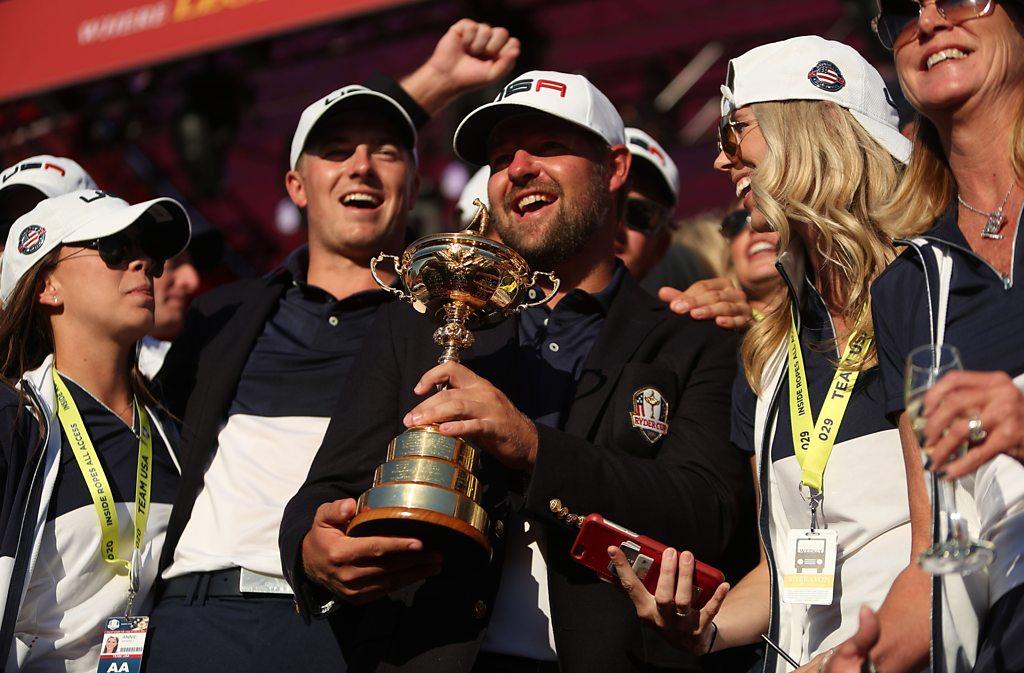
- Published11 July 2013
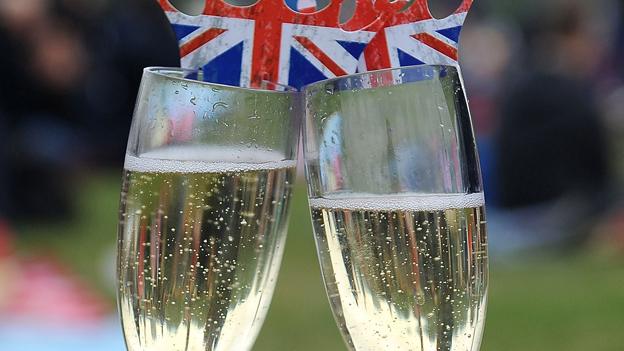
- Published12 August 2010